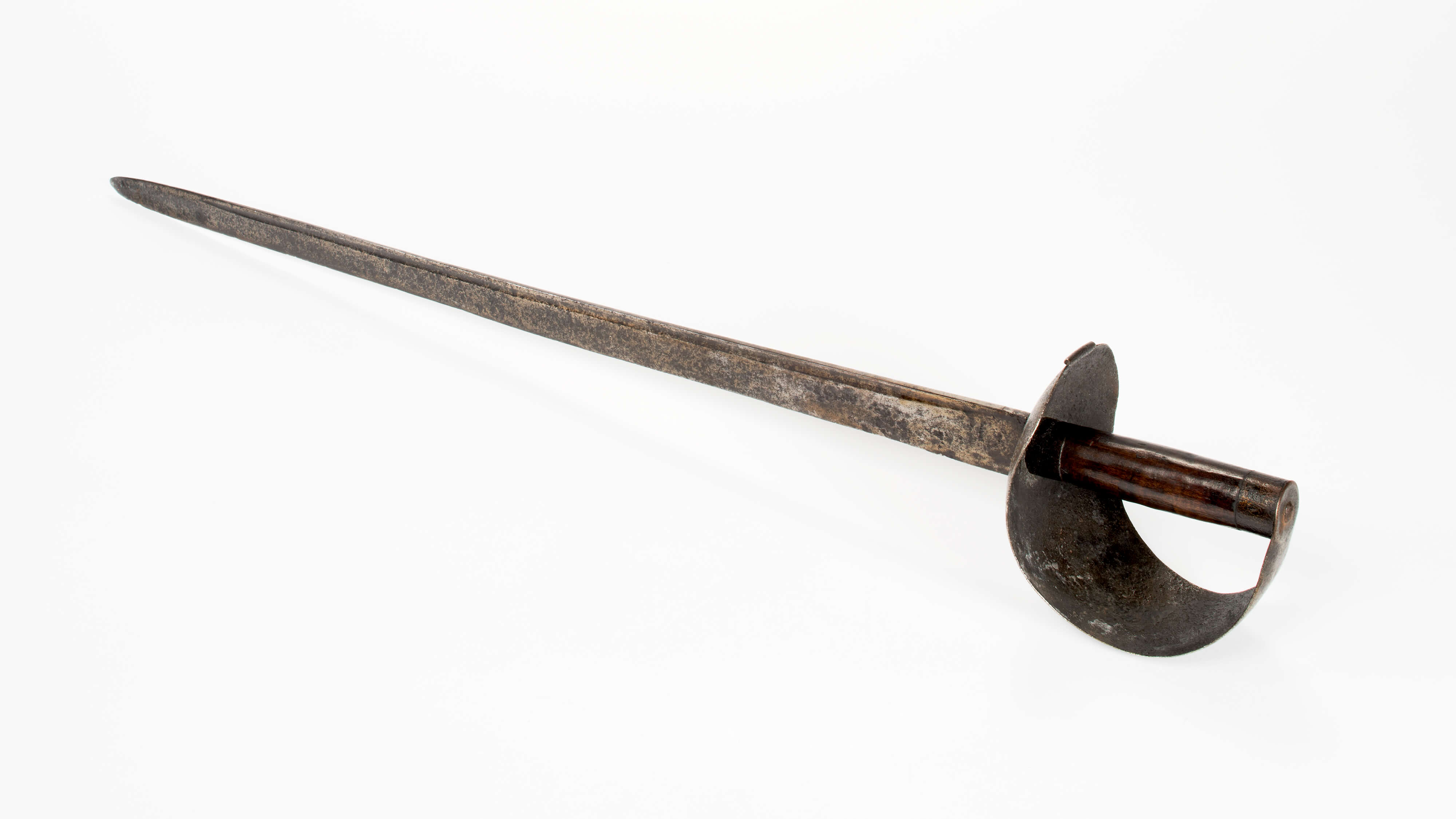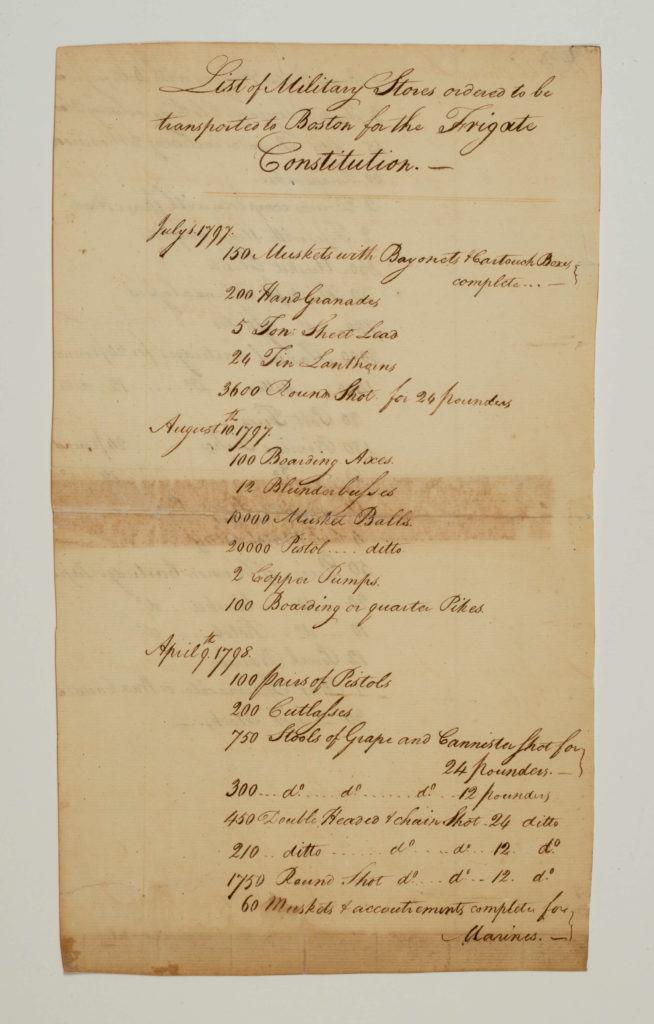


Nathan Starr Cutlass
In 1808, as hostilities with England escalated, the United States Navy increased its gunboat production. The new vessels needed new armaments, and the person tasked with letting contracts for small arms was the recently appointed Navy Agent Joseph Hull of Connecticut. Joseph’s son, Captain Isaac Hull, had used his considerable political clout to get his father the position and, by some accounts, Isaac Hull did most of the real work. Both Joseph and Isaac set out to find reputable weapons makers to produce 2,000 cutlasses, 2,000 boarding pikes, and 2,000 pistols.
After casting about for likely candidates, they found Nathan Starr of Middletown, Connecticut to produce the cutlasses and the pikes. Isaac Hull considered Starr to be a competent and honest workman who was deserving of the Navy’s support. After a short negotiation, they came to an agreement. On May 18, 1808, Nathan Starr and Joseph Hull signed a contract for 2,000 cutlasses at $2.50 each and 2,000 boarding pikes at $0.75 each, to be delivered within four months. The pistol contract went to Simeon North of Berlin, Connecticut who supplied the weapons at $5.87½ each.
In a time when it was rare for contracts to be delivered on time, Nathan Starr made his deadlines by a significant margin. Starr had approximately 100 working days in the four months allotted to do the work, but he was finished in 76 working days. Upon delivery, Isaac Hull inspected the weapons and immediately distributed them to the waiting warships. In addition to this contract, Starr made the same cutlasses for privateers and may have received further Navy contracts for the same weapon.
The straight 30½-inch blade of the Starr cutlass, used by the sailors in hand-to-hand combat, is made of crudely forged steel that could be quickly manufactured, unlike the carefully crafted blades wielded by officers. A fuller (a groove on the side meant to strengthen and lighten the sword) runs most of the length of the blade and there are marks stamped into the ricasso, the flat portion of the blade just before the guard (“N. Starr”, an American eagle, and “US”). The handle is made of wood and the guard of sheet iron.
Few of these cutlasses survive today. There are only about six or seven marked examples in existence, and one that lacks the maker’s stamp. There are no confirmed examples of Starr’s boarding pike. Underwater photography of the War of 1812 wrecks of USS Scourge and USS Hamilton reveal another 30 or 40 examples of this sword at the bottom of Lake Ontario.
Starr continued to contract with the Navy and was asked to proof all of the pistols made by Simeon North. In 1816, Starr produced another 1,000 cutlasses for the Navy at $3.00 each. These cutlasses had shorter, heavier blades than the 1808 model, but were otherwise identical. Starr’s last Navy contract was let in 1826 for 2,000 cutlasses, again at $3.00 each. These cutlasses had a pronounced curve to the blade and a more elaborate handle than Starr’s earlier work. They also included a scabbard, purchased by the Navy for an additional $1.25 each.
Creator
Nathan P. Starr
Date Created
1808
Medium
Wood, Metal
Dimensions
[H]5 1/4 in. [W]4 in.
Catalog Number
1008.2
Credit Line
USS Constitution Museum Collection. Sherman Morss Bequest.
Terms of Use

This work is licensed under a Creative Commons Attribution-NonCommercial-NoDerivs 3.0 Unported License

